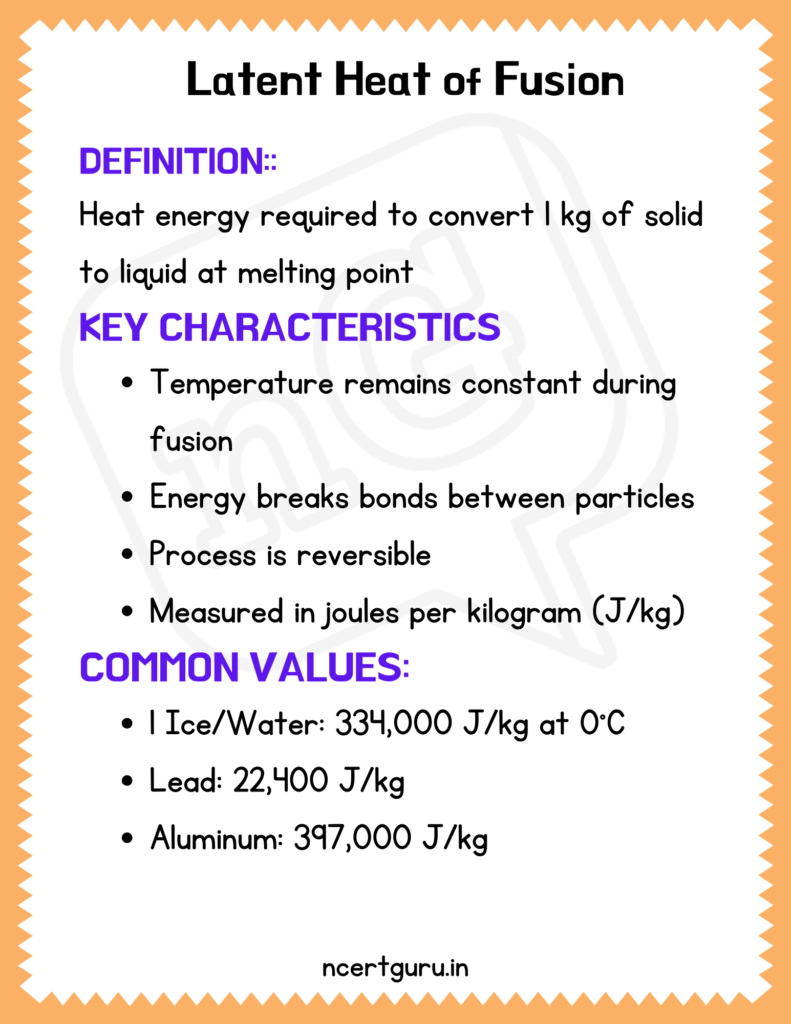Latent heat of fusion is a fundamental concept in physics that explains why ice maintains its temperature while melting. This fascinating phenomenon is crucial for understanding how matter changes states and plays a vital role in everything from ice cream making to industrial processes.
What is Latent Heat of Fusion?
According to textbook, latent heat of fusion is
“the amount of heat energy required to change 1 kg of a solid into liquid at its melting point under atmospheric pressure”.
The word “latent” means hidden, referring to the energy that seems to disappear during the phase change.
Key Points to Understand:
- The temperature remains constant during the melting process
- The energy is used to overcome forces between particles
- It’s a specific amount of energy for each substance
Latent Heat of Fusion of Ice/Water:
Ice has a specific latent heat of fusion at 0°C (273.15 K):
- When ice melts, it absorbs heat energy
- This energy breaks the bonds between water molecules
- The temperature stays at 0°C until all ice melts
- Water particles at 0°C have more energy than ice particles at the same temperature
Understanding latent heat of fusion helps us:
- Predict how long ice will take to melt
- Design better cooling systems
- Understand climate processes
- Develop more efficient industrial processes
Example In Nature:
- Ice melting in lakes and rivers
- Glacier movement
- Snow formation
Example In Daily Life:
- Ice packs for injuries
- Refrigeration systems
- Winter road salting
📚 Key Points to Remember:
- Latent heat is “hidden” energy
- Temperature remains constant during fusion
- Different materials have different latent heat values
- The process is reversible (freezing releases the same amount of energy)

